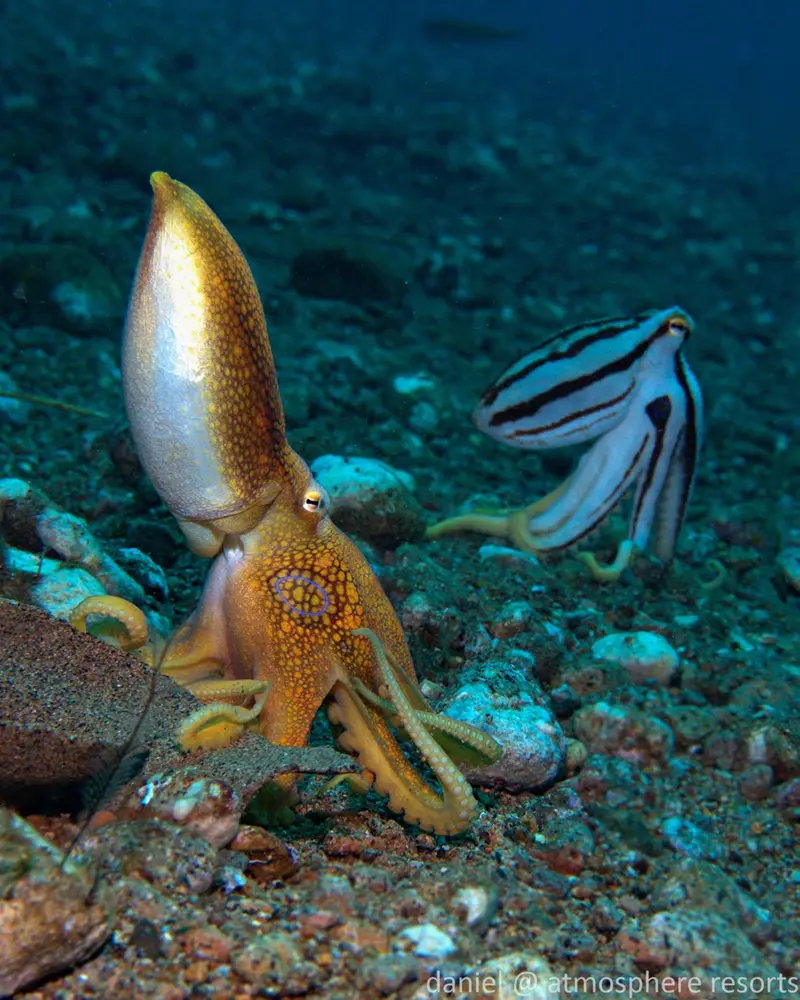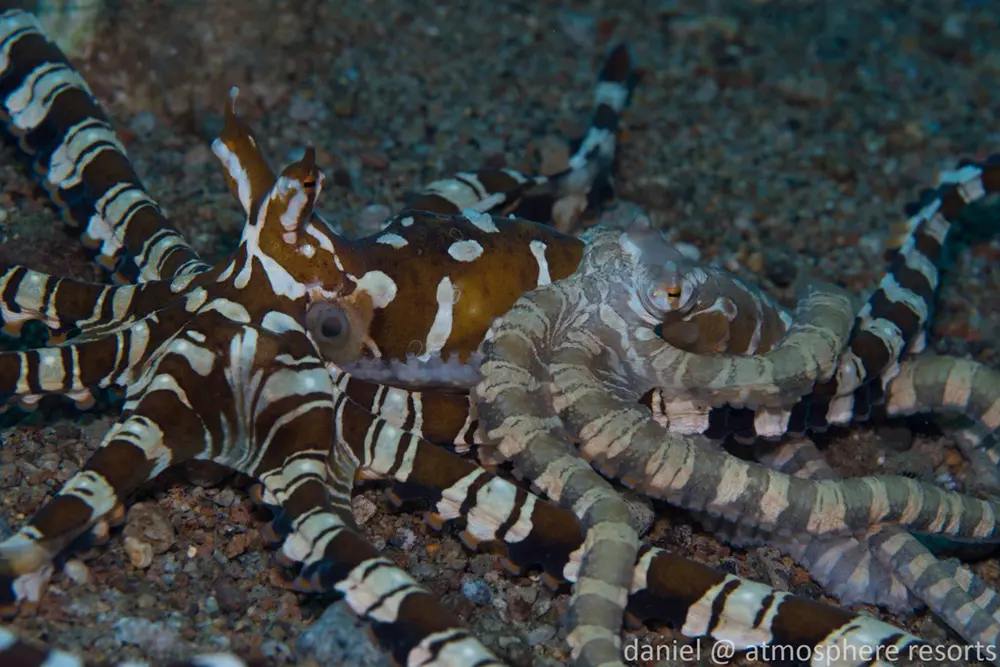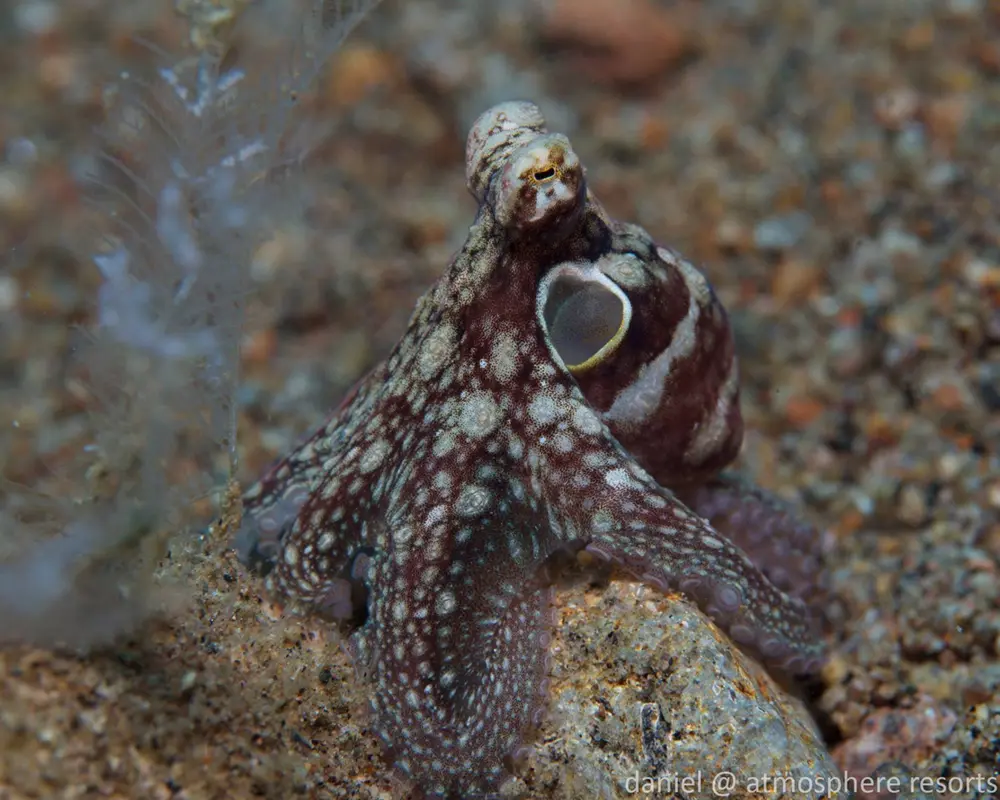Octopus are one of the most interesting critters a diver can encounter while underwater. Whether the fact that they can squeeze into any crevice that their beak will fit into or that they can change color and texture in an instant, one of the most interesting things about octopus is actually their sex life. Octopus will begin to metabolize their own muscles when they become sexually mature to make their eggs and sperm. Because of this, almost all species of octopus lay one clutch of eggs and then die.

The male mototi, the one with the stripes, showing off for the female
Octopus will flirt with each other using different colors and patterns to attract a mate. Depending on the species, there are two main mating styles. Most octopus species with long tentacles have evolved to have a higher chance of the male being cannibalized by the female and they will mate from a distance. Octopus species with small tentacles mate where the male mounts the female from behind. In each instance, the male uses his third tentacle on his right side to insert a packet of spermatophores into the opening of the mantle, the head, of the female. This modified arm is called a hectocotylus.

Although they have long arms, these wonderpus are mating using the mount method
In at least one species of octopus, including the algae octopus, males will guard a female from other potential mates. Some males, called sneaker males, will mimic the color patterns of females to secretly mate with a female while the male is clueless. Some studies have shown that the females in species that have sneaker males actually prefer them over a ‘regular’ male as this sneaking ability shows intelligence and potentially signals a better mate.

Algae octopus, a species that has sneaker males
After they mate, which can last for hours and sometimes happens multiple times over a week or two, the female will go into her den to lay her eggs and the male will go off and die within a few months. Both octopus will begin to succumb to senescence, which is rapid aging or growth. They lose color and weight and visibly look very old and ragged. The female must stay with her eggs the entire time and does not eat, which is why some species will eat the male – one last big meal to nourish the female. If she leaves her den to feed, they eggs are left unguarded. If she feeds on prey near the den, her waste can pollute her eggs as well as bones or shells stacked outside the den which will signal to other predators that there is an octopus in there. Although warm water octopus usually spend 1-2 months guarding their eggs until they hatch, a species of deep sea octopus was observed guarding her eggs for 4.5 years which is the longest gestation period of any animal. After the eggs hatch, the female will also die, completing her life cycle.

A blue ringed octopus guarding her eggs
Your Marine Biologist /Daniel






